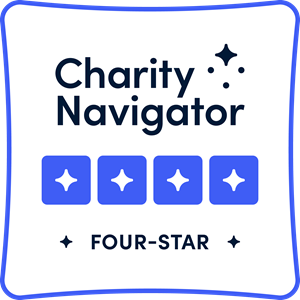Bring in the Light: Tips for Celebrating Chanukah at Home
The holiday of Chanukah marks the rededication of the Jewish temple in Jerusalem by the Maccabees in the 2nd century BCE. Celebrated for eight nights, Chanukah begins this year on the evening of December 10 and ends the evening of December 18. It is called the “festival of lights” because we light a menorah (chanukkiah), a nine-branched candelabra, each night. We increase the number of lights by one until on the eighth night all candles are aflame. This symbolic act represents the miracle from the Chanukah story, where a small quantity of oil, enough to last one day, incredibly lasted for eight days.
The beauty of Chanukah is that meaning transcends this ancient story and represents light in our world during the darkest time of year. During this year when we are staying physically distant, we continue to come together in celebration for each holiday, and Chanukah, while not the most religiously significant, has become a treasured holiday. The simple act of lighting menorahs is a communal experience as Jewish people around the world perform this ritual.
Many concepts from Chanukah can be understood and explored, by even very young children. The candle used to light the others is known as the “shamash,” the helper candle. Children can help adults light Chanukah candles and perform other tasks to make Chanukah special for the whole family. As PJ Library explains, kindergarteners can learn about what it means to be brave like the Maccabees through their own experiences like getting back on a bike after they fall down. Elementary-aged children can learn about freedom of religion, freedom from oppression, and how small groups of people can make a big difference to society by discussing current events. And all of us, no matter our age, can appreciate the importance of refueling our bodies and souls under the Chanukah lights.
Here are some fun ways that your family can celebrate this holiday together:
Try New Chanukah Food
Cooking and eating are joyful Chanukah customs. Jewish communities around the world have adopted unique culinary traditions. What most Chanukah foods have in common is how they are made and a core ingredient: oil. Whether deep-fried, pan-fried, or baked in oil, eating oily food reminds us of the Chanukah miracle and can be deeply satisfying. Latkes (crispy potato pancakes) are the traditional Chanukah food in North America, and sufganiyot (jelly-filled donuts, usually topped with powdered sugar) are an Israeli specialty. If you're feeling adventurous, try your hand at some of these Chanukah foods, many of which are adaptations of sufganiyot from global communities.
- Make Sephardic Chanukah donuts. Known as bunuelos (or bimuelos), these treats are traditionally dipped in honey. Enjoy this recipe from Sarah Aroeste and PJ Library.
- Levivot are delicious fried batter topped with sugar syrup. Try this exotic recipe with chocolate sauce by Tori Avey.
- Communities in Columbia and Cube eat fried plantains, called patacones or tostones. Make this recipe from The Nosher.
- Italians dine on precipizi, small fried balls of dough sweetened with warm honey.
- Oranges are eaten during Chanukah in Morocco because Jaffa oranges come into season during early winter. Moroccans traditionally eat citrus-flavored doughnuts called sfenj, made with orange juice and zest.
- For a taste of southern comfort or a New Orleans twist, you can make Latke waffles or Chanukah beignets.

Chanukah with Preschoolers
There are so many creative ways to explore Chanukah with little ones. Here are a few options that you can try at home. Some activities are playfully messier than others!
- Play: Dreidel is a classic Chanukah game that families play. The letters on the dreidel—nun, gimmel, hay, shin—stand for a Hebrew sentence that translates to mean, "A great miracle happened there."
- Make: Use materials found at home to make a paper towel menorah, or get inspired by Sadie in Sadie’s Almost Marvelous Menorah and make your own clay menorah. Other ideas are creating a Duplo dreidel or using this glow in the dark playdough recipe for hands-on Chanukah fun.
- Watch: The animated video of PJ Library book Antlers with Candles, or the Chanukah Shaboom! Special – Great Miracles.
- Sing: Chanukah O’ Chanukah with beloved Bay Area song leader Isaac Zones. Or All I Want for Chanukah is a Ukulele with local favorite Alison Faith Levy.
Chanukah Ideas for School-aged Children
- Listen: Have I Got A Story For You – The Chanukah Story (for Kids) is a new addition to the PJ Library line up that is sure to entertain children as you prepare for the holiday.
- Create: Kids can Construct a DIY Lego dreidel or make a hardware store menorah. Take photos or videos of children with their creations as a reminder of their tenacity and how they celebrated Chanukah this year.
- In the kitchen: These activities are fun inroads to exploring culinary arts. Bake a cupcake menorah, or mix infused olive oils together with children for holiday treats.
Create Family Chanukah Traditions
- Do good deeds (mitzvot): PJ Library has several ideas for how families can do a mitzvah a day for Chanukah. You can donate to a local food bank, create a Pop Up Dreidel Greeting card for family or friends, and show kindness to pets.
- Create hanging lanterns: Take your lanterns for a night walk and experience winter darkness. Then come inside to light the menorah and feel the warmth of Chanukah lights.
- Read together: Each evening you can select different Chanukah books to read. PJ Library has the ultimate list with titles for all ages.

However, you celebrate this Festival of Lights and whoever you celebrate with, we wish you and your families “Chanukah Sameach!” (Happy Chanukah) or “Chag Sameach!” (Happy Holiday)!

